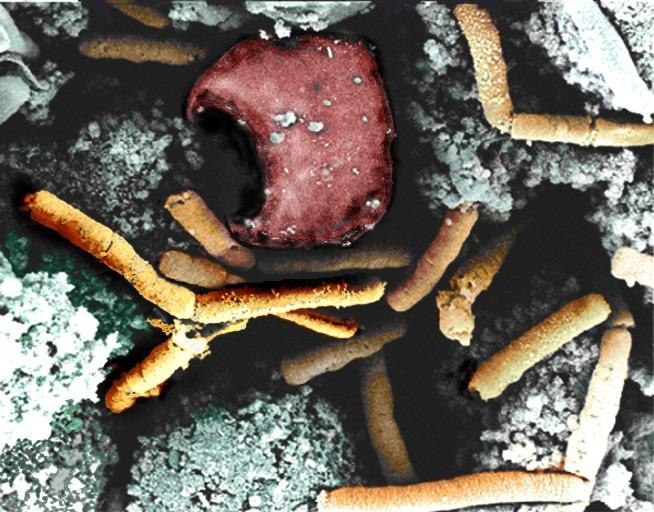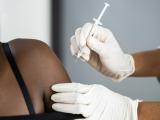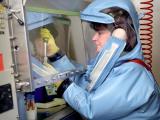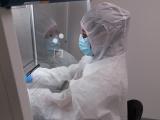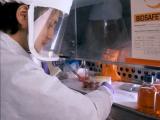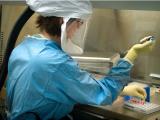A review panel appointed by the Pentagon blames faulty inactivation of Bacillus anthracis (BA) spores and inadequate testing for the inadvertent shipment of samples containing lives spores from an Army lab in Utah to 86 outside labs over the past decade.
A 38-page report released by the committee yesterday says the crucial misstep by the Army's Dugway Proving Ground in Utah was the failure to detect viable BA spores in samples after they were zapped with gamma radiation. BA is the cause of anthrax.
Deputy Defense Secretary Bob Work called the shipments "a massive institutional failure," according to a Department of Defense (DoD) news story. The committee report singles out no individuals for blame, but an Army spokesman said officials would investigate whether there were any failures of leadership, according to a USA Today story yesterday.
The report's findings generally match up with what was reported last week by an online news service that obtained a draft copy of the DoD document. It says there is a shortage of technical information on how to kill BA spores and confirm that they're dead.
More labs received dangerous samples
The contaminated shipments first came to light in late May, when a private lab identified viable spores in a sample. The lab alerted the Centers for Disease Control and Prevention (CDC), which investigated and found that a sample shipped from Dugway in April was not fully inactivated.
Further investigation revealed that 86 facilities in the United States and seven other countries received BA samples from Dugway that were supposedly inactivated but contained low concentrations of live spores, the report notes.
According to USA Today, the CDC revealed yesterday that another 97 labs received live samples as a result of further sharing by the 86 labs that obtained materials directly from Dugway. That brings the total of affected labs to 183.
DoD sends inactivated BA spores to outside labs for research and development of countermeasures to protect US troops, allies, partners, and the public from biological attack, according to Work. The department has four labs that handle BA: Dugway in Utah and three facilities in Maryland: the Edgewood Chemical Biological Center, the Army Medical Research Institute of Infectious Diseases, and the Naval Medical Research Center.
Of the four facilities, Dugway, which lies southwest of Salt Lake City, handles the largest amounts of BA, and it is the only one known to have mistakenly shipped live samples, according to the report.
Half of specimens not killed
One of the review panel's findings was that 17 of 33 BA spore samples from Dugway contained viable spores, according to the DoD news story.
"Obviously, when over half of anthrax batches presumed to be inactivated instead prove to contain live anthrax spores, we have a major problem, and the numbers confirm this judgment,” Work was quoted as saying.
The report indicates that inactivating BA spores is challenging because of the organism's toughness and the many variables in play. It says lab workers "rely on BA kill curves that are internally generated or published in the scientific literature. However, the conditions used to inactivate the BA samples in DoD laboratories are often not validated by these kill curves."
There is evidence that different BA strains show different levels of resistance to irradiation, the report adds. Also, there is evidence that injured but still viable BA spores have delayed germination times and thus might grow too slowly to be detected by viability testing, depending on the time allowed.
Another factor is that Dugway used only 5% of each BA sample for viability testing, the smallest proportion used by any of the four DoD labs, which reduces the likelihood of detecting a low concentration of viable spores, according to the report.
"The key issue with the DPG [Dugway Proving Ground] is not that the irradiation procedures failed; it is that the viability testing did not detect live BA spores in inactivated samples containing live spores," it states.
"The confluence of large production quantities associated with the DPG, low sampling volume of the inactivated material for viability testing, and a very short time period between the completed irradiation cycle and start of the viability testing may have exacerbated the likelihood of not properly identifying live BA spores in inactivated samples," it adds.
No individual blame
As for assigning responsibility for the problems, the panel said, "The development and implementation of ineffective irradiation and viability testing took place over the last decade; this represents an institutional problem at DPG and does not necessarily reflect on any one individual."
In fact, the report suggests that the scientific world as a whole shares some responsibility for the missteps: "A key finding by the committee is that there is insufficient technical information in the broader scientific community to guide the development of thoroughly effective protocols for inactivation of spores and viability testing of BA.
"This has contributed to the creation of protocols that do not completely or permanently sterilize BA with gamma irradiation. The absence of this critical information is a scientific community-wide problem and needs to be addressed with irradiation standards and viability testing procedures."
The report adds that the CDC has agreed to consider setting rules or taking other steps to expand the requirements for making sure that BA spores are inactivated.
According to the DoD news story, Work said he has ordered Frank Kendall, undersecretary of defense for acquisition, technology and logistics, to work with DoD stakeholders, the CDC, and other agencies to develop standardized irradiation and viability testing protocols for all DOD labs that work with spore-forming organisms like anthrax.
The report lists a number of other recommendations to remedy the problem, such as strengthening preventive maintenance of equipment, establishing an environmental surface sampling program, determining radiation dose curves for each BA strain, and quantifying spore samples as accurately as possible before irradiating them.
The review committee consisted of experts from the departments of Agriculture, Defense, Energy, and Homeland Security, plus others from the FBI, academia, and industry.
See also:
Jul 23 DoD news story
Jul 23 USA Today story
Full DoD report
DoD Laboratory Review homepage
Related Jul 22 CIDRAP News story
